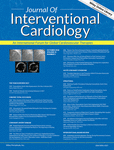The impact of mitral stenosis on outcomes of aortic valve stenosis patient undergoing surgical aortic valve replacement or transcatheter aortic valve replacement
Abstract
Background
The concomitant presence of mitral stenosis (MS) in the setting of symptomatic aortic stenosis represent a clinical challenge. Little is known regarding the outcome of mitral stenosis (MS) patients undergoing transcatheter aortic valve replacement (TAVR) or surgical aortic valve replacement (SAVR). Therefore, we sought to study the outcome of MS patients undergoing aortic valve replacement (AVR).
Method
Using weighted data from the National Inpatient Sample (NIS) database between 2011 and 2014, we identified patients who were diagnosed with MS. Patients who had undergone TAVR as a primary procedure were identified and compared to patients who had SAVR. Univariate and multivariate logistic regression analysis were performed for the outcomes of in-hospital mortality, length of stay (LOS), blood transfusion, postprocedural hemorrhage, vascular, cardiac and respiratory complications, permanent pacemaker placement (PPM), postprocedural stroke, acute kidney injury (AKI), and discharge to an outside facility.
Results
A total of 4524 patients were diagnosed with MS, of which 552 (12.2%) had TAVR and 3972 (87.8%) had SAVR. TAVR patients were older (79.9 vs 70.0) with more females (67.4% vs 60.0%) and African American patients (7.7% vs 7.1%) (P < 0.001). In addition, the TAVR group had more comorbidities compared to SAVR in term of coronary artery disease (CAD), congestive heart failure (CHF), chronic lung disease, hypertension (HTN), chronic kidney disease (CKD), and peripheral vascular disease (PVD) (P < 0.001 for all). Using Multivariate logistic regression, and after adjusting for potential risk factors, TAVR patients had lower in-hospital mortality (7.9% vs 8.1% adjusted Odds Ratio [aOR], 0.615; 95% confidence interval [CI], 0.392–0.964, P = 0.034), shorter LOS. Also, TAVR patients had lower rates of cardiac and respiratory complications, PPM, AKI, and discharge to an outside facility compared with the SAVR group.
Conclusion
In patients with severe aortic stenosis and concomitant mitral stenosis, TAVR is a safe and attractive option for patients undergoing AVR with less complications compared with SAVR.




